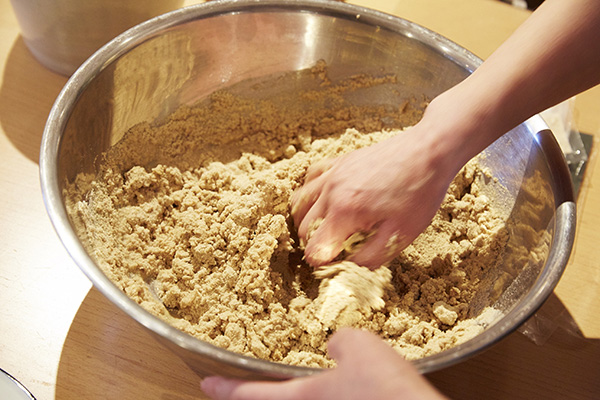A life with rice bran bed starts today

Kits to make your own rice bran beds are becoming readily available for easy pickling, and the number of people enjoying homemade pickles is gradually going up. We talked to food director Rieko Teramoto, who hosts rice bran bed pickling workshops across Japan, about the charms of these pickles.
The amazing health and beauty benefits of lactic acid bacteria

The reason Teramoto entered the world of food and focused on fermented foods was because of her encounter with natural enzyme syrup.
“I used to live in Miyazaki Prefecture. My relatives living there had a large clay pot in their back garden and they were pickling akebia and figs from the mountains in brown sugar. They began to ferment due to the naturally present bacteria. When I drank the syrup, the balance in my intestinal bacteria changed dramatically and I felt like I had more energy.”

Now aware of the connection between the intestines and health, Teramoto began researching fermented foods. At the end of her quest were rice bran bed pickles; a fermented food that she loved since she was a child and could make with the vegetables from Miyazaki. As she continued to consciously include the pickles in her daily diet, she began to feel their benefits.
“I used to have poor health and I would often go to the hospital, but now I feel better the older I become. Your intestinal bacteria also affect your skin so I would especially recommend these pickles for women.”
Pickle anything you want! Delicious rice bran bed pickles in many varieties

Some ingredients may require more attention and preparation when they are pickled in the rice bran bed, but in general, you can use anything you want, Teramoto says. The vegetables only need to be pickled for half to a whole day. The pickling time can be adjusted depending on how salty and sour you like your pickles.
“You can use regular vegetables like daikon radish and cucumbers, or seasonal vegetables to enjoy something different every season. In the summer, you can pickle Japanese ginger or okra, and from autumn, root vegetables are great,” says Teramoto.

Foods high in protein like avocado and tofu become like cheese after they have been pickled, and are great when paired with wine. Vegetables can also be pickled lightly and used in salads. Meat and fish can also be pickled; they soak up just the right level of salt and acidity, making them delicious. The rice bran bed becomes sour as it continues to ferment, making the pickles sour. If this happens, the ingredients can be chopped finely and used in dressings or tartar sauce.
“One of the great things about the rice bran bed pickles is that you can use them in various recipes because of their acidity and saltiness, in addition to eating them with rice or alcohol, two classic pairings.”

Apparently, the condition of the rice bran bed changes every day depending on what is pickled, the environment, and the indigenous bacteria on the hands of the person preparing the pickles.
“The fun of making rice bran bed pickles is you can create a rice bran bed that suits your own tastes. It has been said that in ancient times, rice bran beds were one of the things newlywed wives took to their wedded home. Some rice bran beds have been passed on from generation to generation for 200 years. The bed develops a deeper and tastier flavor with age, becoming a flavor only that family produce,” says Teramoto.
The key to amazing pickles is a well-managed rice bran bed

The pickles’ flavor is said to be determined by the rice bran bed. But it is actually quite difficult to control as the changes are subtle and depend on temperature and the ingredients used.
We asked Teramoto for her recommended rice bran bed recipe, as well as three tips for making tasty pickles.
Enjoy a life of pickling with your living rice bran bed

It is said that self-made rice bran bed pickles taste miles better because you spend a lot of time and effort on them.
“The pickles taste best when they are fresh out of the bed, something that can only be enjoyed when you make them by hand,” says Teramoto.
“If you compare these pickles with other fermented foods, the rice bran bed pickles are a lot of work because you need to take care of the bed. But that means that you cherish it more. Some of my workshop clients even give names to their rice bran beds. It feels as if you are chatting with the bed, rather than controlling it.”
The secret of enjoying rice bran bed pickling is to enjoy it “without stress, have fun and in your own style.” We invite our readers to prepare your own rice bran bed and enjoy your own rice bran bed pickling lifestyle.














